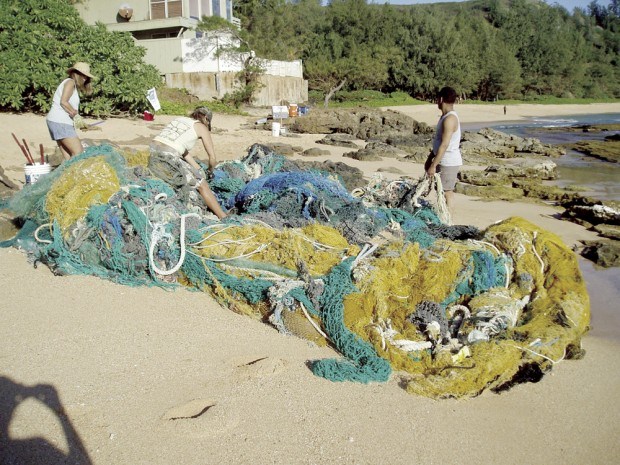LIHU‘E — Initial University of Hawai‘i reports estimated that up to 20 million tons of tsunami debris from Japan could reach Hawaiian shores by early 2013, but new findings suggest it may start to arrive as early as next month.
LIHU‘E — Initial University of Hawai‘i reports estimated that up to 20 million tons of tsunami debris from Japan could reach Hawaiian shores by early 2013, but new findings suggest it may start to arrive as early as next month.
“A UH computer model shows it’s closer than predicted,” said Dr. Carl Berg, Surfrider Kaua‘i Chairman and Blue Water task force coordinator, Thursday. “Before, they said two years. Now, they’re saying January. There’s a possibility we’ll get some stuff floating up on shore in January or February. All things float differently.”
What should the Garden Isle community do? Will the debris be “hot,” meaning radioactive?
Those working directly with the tsunami debris problem will answer questions such as these at a small conference sponsored by Surfrider and Kaua‘i Community College’s Marine Option Program from 9 a.m. to noon Saturday at the KCC cafeteria. The conference is geared for and open to the public. Admission is free, but seating will be limited.
In addition to Berg, speakers will include Dr. Nikolai Maximenko and Dr. Henrieta Dulaiova of UH-Manoa and Carey Morishige, Pacific Islands regional coordinator of the National Oceanic and Atmospheric Administration’s Marine Debris Program.
Maximenko will discuss his modeling of the ocean currents and how sightings of debris, such as the September finding of debris and a small fishing boat from Fukishima in the ocean 300 miles from Midway Island, have allowed him to improve the predictive capabilities of the model, Berg said. He will provide the latest prediction of when and how much debris the island can expect.
Dulaiova has been studying the radioactivity of the ocean waters and debris off Japan since the tsunami damaged the nuclear reactors there, Berg said. She has established monitoring stations off Midway and O‘ahu and will present her latest findings and discuss the possible threat of radiation to marine ecosystems.
Morishige will talk about NOAA’s role in monitoring the marine debris and it removal from both the north, west and main Hawaiian Islands, Berg said, and she will also discuss NOAA’s ocean currents model and how it predicts debris distribution.
Berg said he will discuss Surfrider’s Net Patrol and beach cleanup programs that have been removing tons of debris from Kaua‘i’s beaches and recycling nets to H-Power on O‘ahu.
“Surfrider is extremely concerned about the threat of the debris to the marine life in the ocean and to the people of Hawai‘i, who spend so much time on the ocean, waves and beaches here,” Berg said. “There is potential danger from sharp objects, chemicals and entanglement by marine life in the debris. People of Kaua‘i are familiar with the devastation that marine debris caused to the beaches and reefs after hurricane ‘Iniki. Who will remove it and what will we do with all of this new debris?”
He said the issue is more of a debris problem than a radiation problem; however, a monitoring program will start in January, before debris is expected to arrive, in order to establish baseline measurements.
Berg asked rhetorically how will it affect tourism and business.
“Imagine Dr. Berg in a white hazmat suit walking down the beach with a Geiger counter,” he said, adding that some in the tourism industry are highly concerned about the message it will send to tourists.
Surfrider hopes that volunteers from all around both Kaua‘i and Ni‘ihau will become involved in the debris monitoring and removal program. For more information, contact Surfrider at http://surfriderkauai.ning.com or on Facebook at Surfrider Kaua‘i.
• Vanessa Van Voorhis, staff writer, can be reached at 245-3681 (ext. 251) or by emailing vvanvoorhis@thegardenisland.com.


